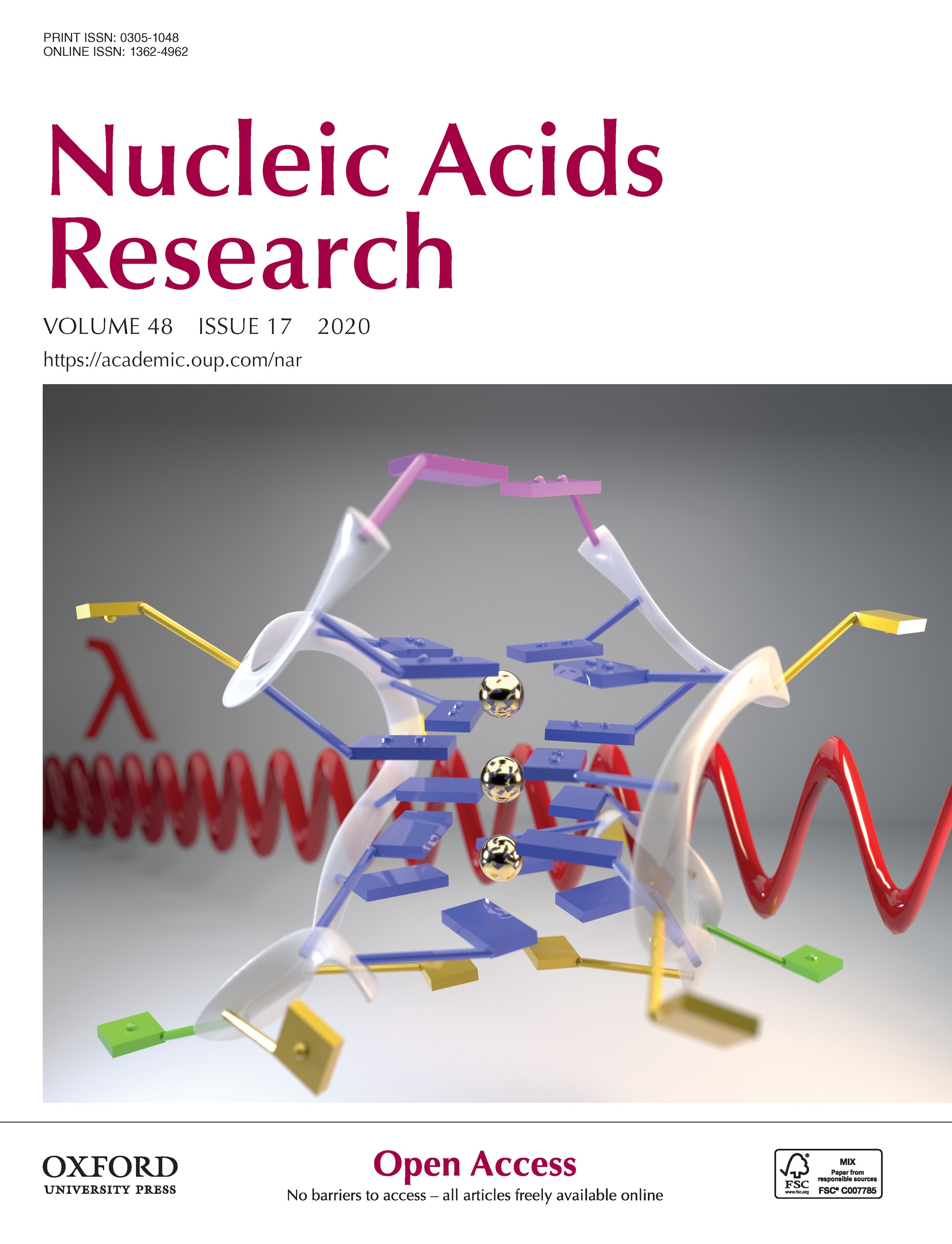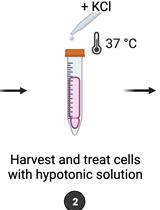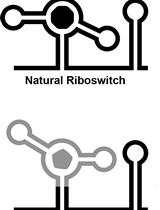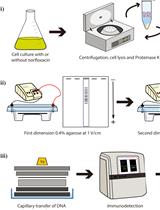- EN - English
- CN - 中文
Construction of DNA/RNA Triplex Helices Based on GAA/TTC Trinucleotide Repeats
基于GAA/TTC三核苷酸重复序列构建DNA/RNA三链螺旋
发布: 2021年09月20日第11卷第18期 DOI: 10.21769/BioProtoc.4155 浏览次数: 3477
评审: Khyati Hitesh ShahLalith PereraAnonymous reviewer(s)
Abstract
Atypical DNA and RNA secondary structures play a crucial role in simple sequence repeat (SSR) diseases, which are associated with a class of neurological and neuromuscular disorders known as “anticipation diseases,” where the age of disease onset decreases and the severity of the disease is increased as the intergenerational expansion of the SSR increases. While the mechanisms underlying these diseases are complex and remain elusive, there is a consensus that stable, non-B-DNA atypical secondary structures play an important – if not causative – role. These structures include single-stranded DNA loops and hairpins, G-quartets, Z-DNA, triplex nucleic acid structures, and others. While all of these structures are of interest, structures based on nucleic acid triplexes have recently garnered increased attention as they have been implicated in gene regulation, gene repair, and gene engineering. Our work here focuses on the construction of DNA triplexes and RNA/DNA hybrids formed from GAA/TTC trinucleotide repeats, which underlie Friedreich’s ataxia. While there is some software, such as the Discovery Studio Visualizer, that can aid in the initial construction of DNA triple helices, the only option for the triple helix is constrained to be that of an antiparallel pyrimidine for the third strand. In this protocol, we illustrate how to build up more generalized DNA triplexes and DNA/RNA mixed hybrids. We make use of both the Discovery Studio Visualizer and the AMBER simulation package to construct the initial triplexes. Using the steps outlined here, one can – in principle – build up any triple nucleic acid helix with a desired sequence for large-scale molecular dynamics simulation studies.
Keywords: DNA/RNA (DNA/RNA)Background
Simple sequence repeats (SSRs) – which represent about 3% of the entire human genome – typically consist of 1 to 6 nucleotides that repeat up to 30 times or more (Ellegren et al., 2004; Subramanian et al., 2003). Among the various possible SSRs, trinucleotide repeats (TRs) represent one of the most common types in the exome of all eukaryotic genomes (Toth et al., 2000). Many TRs exhibit “dynamic mutations” that do not follow Mendelian inheritance, which states that mutations in a single gene may be stably transmitted between generations (Caburet et al., 2005). This can lead to genetic diseases where, in successive generations, the age of disease onset decreases and disease severity increases (Mirkin, 2006). These mutations – whose probability also increases with generations – are due to the intergenerational expansion of TRs. After a certain threshold in the repeat number of TRs is reached, the probability of further TR expansion and the severity of the disease increase with the number of repeats. The dynamic mutations associated with TRs cause severe neurodegenerative and neuromuscular disorders known generically as Trinucleotide (or Triplet) Repeat Expansion Diseases (TREDs), which lead to cell toxicity and death (Wells et al., 1998; Orr et al., 2007; Wells et al., 2005). To date, about 50 DNA expandable SSR diseases have been identified, and their number is expected to grow. The TR expansions are believed to be caused by DNA slippage during replication, repair, transcription, or recombination.
Although the mechanisms underlying TREDs may be quite complex, some simple trends are remarkably robust. In particular, there is a correlation between the repeat number beyond the repeat threshold and the probability of further expansion and increased pathology. Another important breakthrough has been the recognition that stable, non-B-DNA secondary structure in the expanded repeats is an important factor causing the expansion and disease (McMurray et al., 1999). As such, expandable repeats are known to display atypical structural characteristics such as single-stranded hairpins, Z-DNA, G-quartets, triple helix structures, and slip-stranded duplexes. It is therefore believed that understanding the structural and dynamical characteristics of these atypical secondary structures is important for ultimately unraveling the puzzle of TREDs.
While our previous work on TRs and hexanucleotide repeats in the context of C9FTD/ALS diseases (Zhang et al., 2017a and 2017b) was centered on understanding single-stranded loops and hairpins (Pan et al., 2017, 2018a and 2018b; Xu et al., 2020), here we focus on the construction of triplexes associated with GAA/TTC TRs (Zhang et al., 2020). These are associated with Friedreich’s ataxia (Grabczyk et al., 2000), which is caused by the expansion of GAA in the first intron of the frataxin gene. Experimentally, these repeats have been observed to form either triplexes or R-loops. DNA triplexes or triple-stranded DNA or H-DNA were first reported in 1957 (Felsenfeld et al., 1957). These non-canonical three-stranded helices consist of a Watson-Crick paired helical duplex and a third strand that binds to the duplex via Hoogsteen or reversed Hoogsteen hydrogen bonds. R-loops, on the other hand, represent three-stranded nucleic acid structures consisting of a hybrid RNA:DNA duplex (formed by a template DNA and the RNA strands) in conjunction with the displaced, non-template single-stranded DNA. Both triplexes and R-loops can have cellular functions and are essential for gene therapy (Kaji et al., 2001; Seidman et al., 2003).
There is much to be learned about the microscopics of DNA triplexes and R-loops; in particular, many of the atomistic aspects of these atypical nucleic acid structures remain elusive. Hence, we have recently examined the structure and stability of DNA triplexes and RNA/DNA hybrids associated with GAA/TTC TRs (Zhang et al., 2020). In these structures, the third strand is inserted into the major groove or minor groove in pure RNA triplexes (Szewczak et al., 1998). However, since the minor groove RNA triplexes are unstable (Devi et al., 2015), we only consider major groove RNA triplexes in this protocol. Our study was based on large-scale classical Molecular Dynamics (MD) simulations. The initial modeling of the triple helices was performed with the Discovery Studio Visualizer (Visualizer, 2005), and we made use of the AMBER simulation package as an optimization and sampling tool for exploring the structure and stability of DNA triplexes and selected R-loops (Case et al., 2020). In this bio-protocol paper, we provide details for the initial modeling and construction of the triple helices associated with GAA/TTC TRs. Specifically, we focus on the sequence GAA/TTC(UUC) as an example.
We primarily discuss how to build up DNA-based triplexes and mixed DNA/RNA structures, as shown below in Figure 1. With the models constructed in this bio-protocol, it is straightforward to investigate triple helices per se and their interactions with other biomolecules.

Figure 1. Structures (from left to right) of DNA triple helix, DNA·RNA:DNA hybrid triple helix, RNA·DNA:DNA hybrid triple helix, and RNA triple helix. DNA strands are colored in blue, and RNA strands are colored in red.
Software
Discovery Studio Visualizer version 2019, or higher
Discovery Studio Visualizer is a free software developed by Dassault Systemes BIOVIA. Access this software at: https://discover.3ds.com/discovery-studio-visualizer-download.
Amber, version 16 or higher
Amber is a suite of biomolecular simulation programs for large-scale MD studies. Access Amber at: http://ambermd.org/.
Procedure
文章信息
版权信息
© 2021 The Authors; exclusive licensee Bio-protocol LLC.
如何引用
Zhang, J., Fakharzadeh, A., Pan, F., Roland, C. and Sagui, C. (2021). Construction of DNA/RNA Triplex Helices Based on GAA/TTC Trinucleotide Repeats. Bio-protocol 11(18): e4155. DOI: 10.21769/BioProtoc.4155.
分类
分子生物学 > DNA > DNA 结构
分子生物学 > RNA > RNA 结构
您对这篇实验方法有问题吗?
在此处发布您的问题,我们将邀请本文作者来回答。同时,我们会将您的问题发布到Bio-protocol Exchange,以便寻求社区成员的帮助。
Share
Bluesky
X
Copy link













